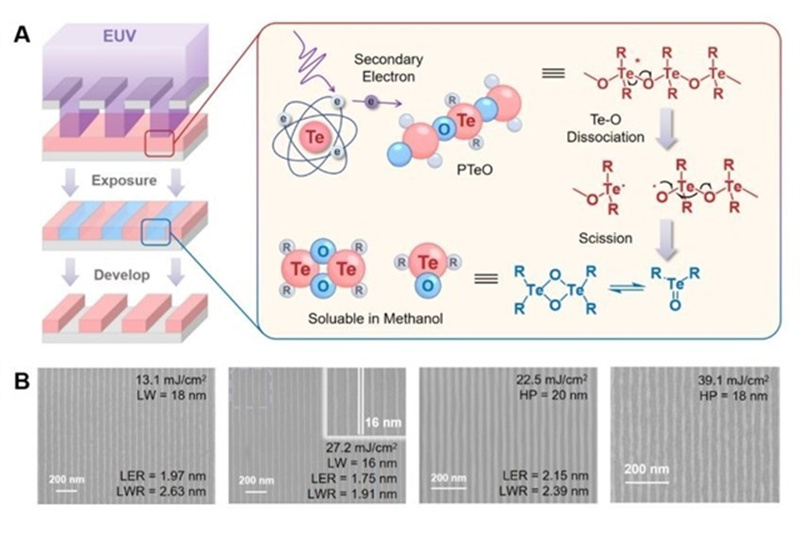On July 16, researchers from Tsinghua University's Department of Chemistry published a significant breakthrough in Science Advances, unveiling a novel extreme ultraviolet (EUV) photoresist material based on polytelluoxane. This innovation offers a new design path for next-generation photoresists critical to advanced semiconductor manufacturing at 7nm and below.
Developed by Professor Huaping Xu's research team, the new photoresist integrates tellurium (Te)—a heavy element with one of the highest known EUV absorption cross-sections—directly into the polymer backbone using Te–O bonds. This structure dramatically boosts EUV absorption efficiency compared to traditional photoresist materials that rely on lighter elements or metals such as Zn, Zr, Hf, or Sn.
In addition to its high absorption, the Te–O bond has low dissociation energy, allowing the polymer backbone to break apart upon EUV exposure. This mechanism induces solubility changes necessary for high-sensitivity positive-tone patterning. The material is synthesized from a single small-molecule component, achieving ideal characteristics—high absorption, clean scission response, molecular uniformity, and simplicity—within a minimalist design.

The development is considered a major step toward reducing China's dependence on imported photoresists. EUV photoresists, essential for producing chips at leading-edge nodes, are currently dominated by foreign suppliers. According to projections, the global photoresist market will grow from $12 billion in 2025 to over $28 billion by 2030, with China's share expected to reach 30%.
This breakthrough aligns with China's national semiconductor strategy. Under the 14th Five-Year Plan, photoresists are listed as a priority material, supported by over ¥20 billion in tax incentives and R&D funding. The National Integrated Circuit Industry Investment Fund Phase III is also investing heavily in localizing critical materials like EUV resists.
With demand for high-performance semiconductors surging and challenges such as low EUV source brightness and high defect sensitivity remaining, the Tsinghua team's work may help lay the foundation for a domestically-driven, globally competitive photoresist ecosystem in China.
+86 191 9627 2716
+86 181 7379 0595
8:30 a.m. to 5:30 p.m., Monday to Friday
